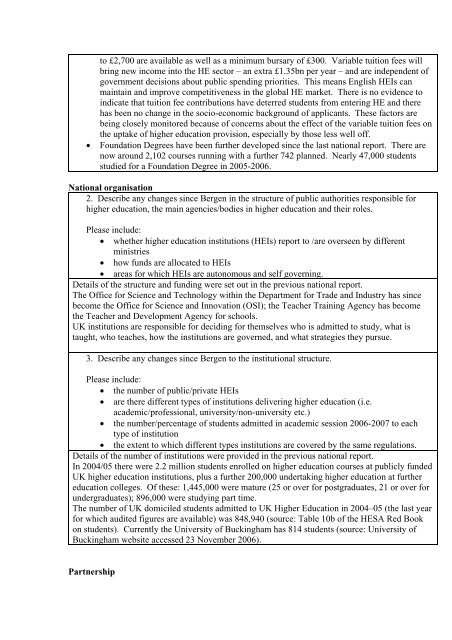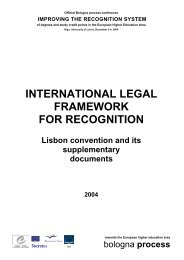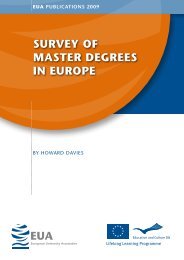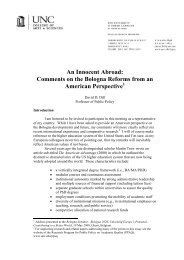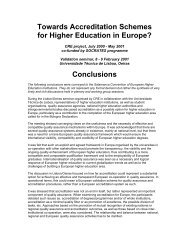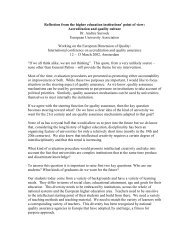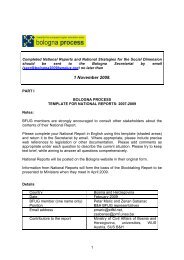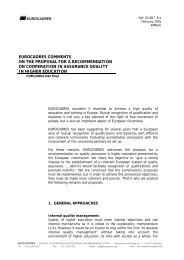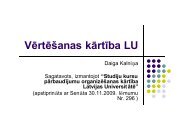BOLOGNA PROCESS - UK England, Wales & Northern Ireland
BOLOGNA PROCESS - UK England, Wales & Northern Ireland
BOLOGNA PROCESS - UK England, Wales & Northern Ireland
Create successful ePaper yourself
Turn your PDF publications into a flip-book with our unique Google optimized e-Paper software.
to £2,700 are available as well as a minimum bursary of £300. Variable tuition fees willbring new income into the HE sector – an extra £1.35bn per year – and are independent ofgovernment decisions about public spending priorities. This means English HEIs canmaintain and improve competitiveness in the global HE market. There is no evidence toindicate that tuition fee contributions have deterred students from entering HE and therehas been no change in the socio-economic background of applicants. These factors arebeing closely monitored because of concerns about the effect of the variable tuition fees onthe uptake of higher education provision, especially by those less well off.• Foundation Degrees have been further developed since the last national report. There arenow around 2,102 courses running with a further 742 planned. Nearly 47,000 studentsstudied for a Foundation Degree in 2005-2006.National organisation2. Describe any changes since Bergen in the structure of public authorities responsible forhigher education, the main agencies/bodies in higher education and their roles.Please include:• whether higher education institutions (HEIs) report to /are overseen by differentministries• how funds are allocated to HEIs• areas for which HEIs are autonomous and self governing.Details of the structure and funding were set out in the previous national report.The Office for Science and Technology within the Department for Trade and Industry has sincebecome the Office for Science and Innovation (OSI); the Teacher Training Agency has becomethe Teacher and Development Agency for schools.<strong>UK</strong> institutions are responsible for deciding for themselves who is admitted to study, what istaught, who teaches, how the institutions are governed, and what strategies they pursue.3. Describe any changes since Bergen to the institutional structure.Please include:• the number of public/private HEIs• are there different types of institutions delivering higher education (i.e.academic/professional, university/non-university etc.)• the number/percentage of students admitted in academic session 2006-2007 to eachtype of institution• the extent to which different types institutions are covered by the same regulations.Details of the number of institutions were provided in the previous national report.In 2004/05 there were 2.2 million students enrolled on higher education courses at publicly funded<strong>UK</strong> higher education institutions, plus a further 200,000 undertaking higher education at furthereducation colleges. Of these: 1,445,000 were mature (25 or over for postgraduates, 21 or over forundergraduates); 896,000 were studying part time.The number of <strong>UK</strong> domiciled students admitted to <strong>UK</strong> Higher Education in 2004–05 (the last yearfor which audited figures are available) was 848,940 (source: Table 10b of the HESA Red Bookon students). Currently the University of Buckingham has 814 students (source: University ofBuckingham website accessed 23 November 2006).Partnership


